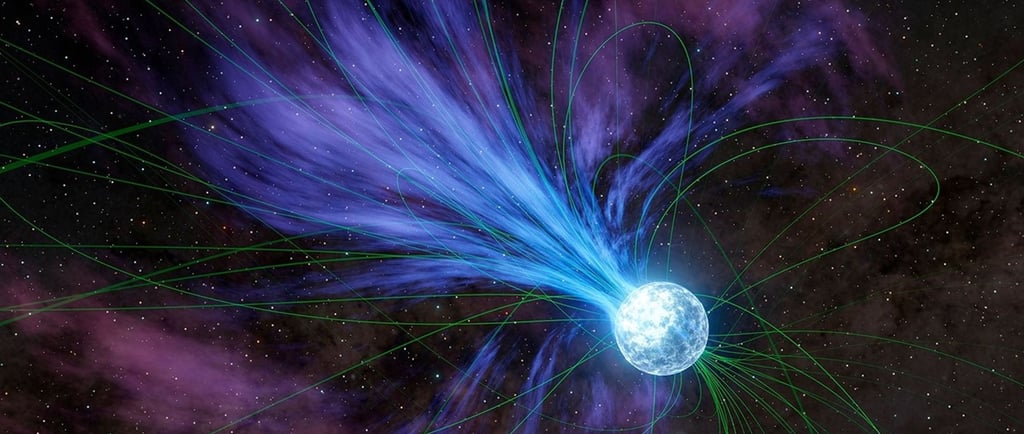Hidden Gold In Magnetars


Introduction to Magnetars
In the vast expanse of the universe, the origins of elements are a crucial area of study for astrophysicists. Recent research led by Patel has revolutionized our understanding by focusing on magnetars—highly magnetized neutron stars that may play a pivotal role in synthesizing elements within the galaxy.
Findings from Archival Data
Patel's study utilized 20-year-old archival data sourced from NASA and ESA telescopes, shedding light on an unexpected contribution to the elemental composition of the universe. The research indicates that the giant flares emitted by magnetars account for up to 10% of the abundance of elements, excluding iron, found in our galaxy. This insight is groundbreaking, as it offers a new perspective on how elements apart from iron were formed in the early stages of the universe.
The Cosmic Impact of Magnetar Flares
Magnetars, known for their powerful magnetic fields and explosive flares, existed relatively early in the universe's history. Patel and fellow authors suggest that these giant flares could have been responsible for the creation of heavy elements such as gold. This hypothesis aligns with the observations that magnetars are capable of releasing immense amounts of energy, ultimately enriching the interstellar medium with various elements. As a result, these cosmic giants are reconsidered as significant contributors to the elemental landscape.
In summary, the study of magnetars highlights the interconnectedness of celestial phenomena and element formation. As researchers continue to unlock the secrets of the universe, Patel's findings underscore the importance of revisiting existing data to uncover novel pathways of element synthesis. The implications of this research extend beyond mere academic interest; they redefine our understanding of the universe’s chemical evolution and its early history.
